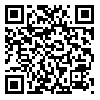Volume 7, Issue 1 (12-2013)
2013, 7(1): 1-10 |
Back to browse issues page
Download citation:
BibTeX | RIS | EndNote | Medlars | ProCite | Reference Manager | RefWorks
Send citation to:



BibTeX | RIS | EndNote | Medlars | ProCite | Reference Manager | RefWorks
Send citation to:
Ahmadi Tahour Soltani M, Kormi Neia R, Ahadi H, Moradi A R. Structural Relationship between Hope with Attachment Style, life Regard, Social Support, Self efficacy and Mastery Goal Orientation in Students. Research in psychological health 2013; 7 (1) :1-10
URL: http://rph.khu.ac.ir/article-1-1687-en.html
URL: http://rph.khu.ac.ir/article-1-1687-en.html
1- , ahmadi_1362@yahoo.com
Abstract: (14403 Views)
The aim of the this research was to present a causal model for explaining hope through using Structural Equation Modeling in a sample of Iranian University students. Therefore, a sample of 379 students were selected via multiple stage sampling method from Hamadan university and they responded to Sympson's Hope Scale, Sherer self-efficacy scale, adult attachment style scale, multidimensional perceived social support, life regard index (Meaningful life) and goal orientation questionnaire. Before fitting the basic model, psychometric properties of the tools were investigated through exploratory and confirmatory factor analysis. In the designed model, attachment styles, Meaningful life and social support were considered as the exogenous latent variables (independent variables), self-efficacy and mastery goal orientation as the mediator latent variables, and hope as the endogenous latent variable (dependent variable). Results indicated that theoretical model was fit with the data. Also the results showed that the social support and Meaningful life were directly and indirectly, and secure attachment was directly in a significant relationship with the hope. Furthermore, avoidance attachment was directly in a significant relationship with the hope through self-efficacy mediator variable. All the variables proposed to explain the hope could explain 0.46 percent of its variance.
Type of Study: Research |
Published: 2013/12/15
Published: 2013/12/15
Send email to the article author
| Rights and permissions | |
 | This work is licensed under a Creative Commons Attribution-NonCommercial 4.0 International License. |





